FUNDING CUTS IMPACT CT HUMANITIES: Help CT Humanities navigate recent funding cuts and continue our vital work across Connecticut. All donations made to CTH will be matched dollar-for-dollar up to $50,000. Donate today!
News & Updates
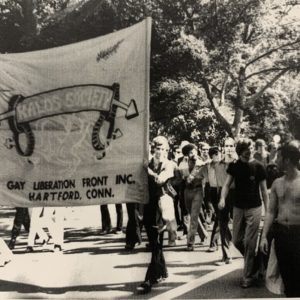
Kalos Society: Connecticut’s First Modern LGBTQ+ Activist Organization
The Kalos Society emerged in the late 1960s as the first gay activist organization in Connecticut
Read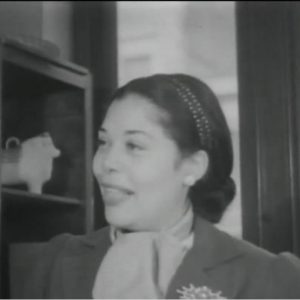
Ann Petry: Old Saybrook’s Bestselling African American Author
Living most of her life in Old Saybrook, Ann Petry was the first African American woman to sell over one million copies of a book with her first novel, The Street.
Read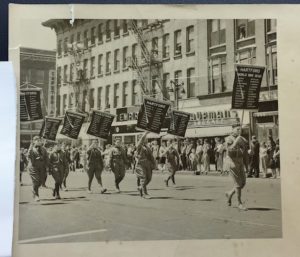
Hartford’s Commemoration of World War I Servicemen and Women
At the end of the First World War, Hartford found a variety of ways to honor the sacrifices of its servicemen and women.
Read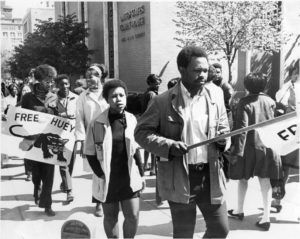
The Black Panther Party in Connecticut: Community Survival Programs
The Black Panthers had a significant presence in Connecticut in the 1960s and ’70s, particularly through community programs aimed to serve minorities living in the state’s more urban areas.
Read
Albert Augustus Pope, Transportation Pioneer
Pope’s bicycles and automobiles not only gave 19th-century consumers greater personal mobility, they also helped propel social change.
Read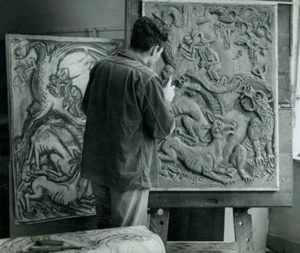
Breaking the Mold: Tradition and Innovation in the Work of Elbert Weinberg
Elbert Weinberg was a Hartford-born sculptor who earned international fame for his works, many of which were influenced by his Jewish faith.
Read
Restoring a Unique Piece of Bloomfield History
The Oliver Filley House in Bloomfield, Connecticut, is a two-story farmhouse designed in the Greek Revival style and built in 1834.
Read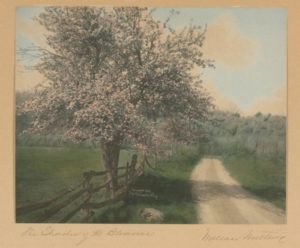
Past Perfect: Wallace Nutting Invents an Ideal Olde New England
In the early 1900s consumers bought photographs, furniture, and books from a former minister who sold the fantasy of simpler times as an antidote to modern life.
Read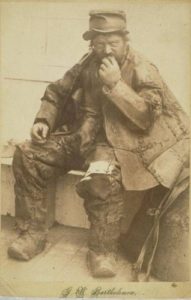
The Old Leatherman Alive in Our Memories
This enigmatic, solitary figure has captured the public imagination since the mid-1800s when he began walking a 365-mile interstate loop over and over again.
Read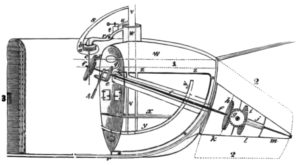
Benjamin Dutton Beecher had a Penchant for Invention
Described by some as “eccentric,” Benjamin Dutton Beecher was a millwright and machinist with a knack for invention.
Read
The Bryan-Andrew House: Still Standing After All These Years
Believed to be the oldest house in Orange, the Bryan-Andrew House served as a home for a variety of local families for over 250 years.
Read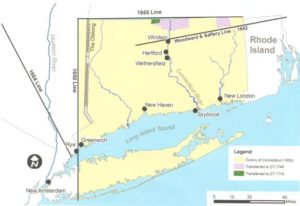
Surveying Connecticut’s Borders
After some 350 years, the matter of where exactly some of the state’s boundaries lie continues to be debated.
Read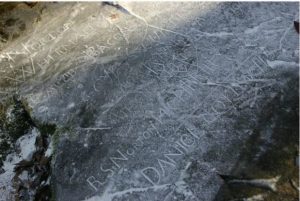
Farmington’s Hospital Rock Dates Back to 18th-Century Smallpox Inoculation
Deep within the woods of Rattlesnake Mountain in Farmington are the remains of a late-18th-century smallpox inoculation hospital.
Read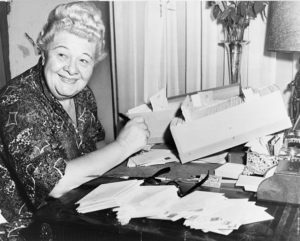
Sophie Tucker, The Last of the Red-Hot Mamas
Hartford’s own leading lady was a lively entertainer whose career spanned over five decades and whose generosity spilled over to various and numerous charities.
Read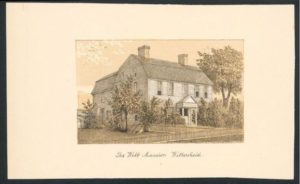
Washington Didn’t Only Sleep Here: George Washington at Wethersfield’s Webb House
The first time George Washington traveled through Connecticut, he was an ambitious Virginia colonel hoping to advance his career in the British military.
Read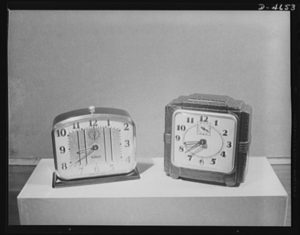
Papier-Mache Clocks – Who Knew?
The William L. Gilbert Clock Corporation of Winsted was one of the few clock-making firms in Connecticut allowed to continue the manufacture of clocks during World War II.
Read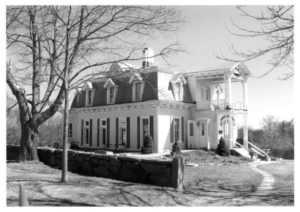
“Gentleman’s Farming” Comes to Waterford
Walnut Grove received a listing on the National Register of Historic Places for its contribution to furthering the understanding of nearly 200 years of history.
Read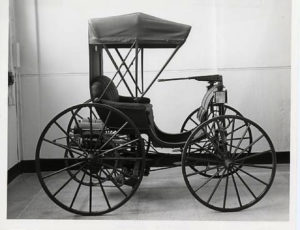
Frank Duryea Drives the First Automobile in Connecticut
In 1893, Frank Duryea, along with his brother, built one of the first cars in the country to have an internal combustion engine.
Read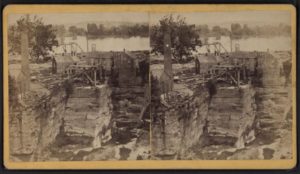
Portland Puts Its Stamp on an Architectural Era
The brownstone quarries in Portland, Connecticut, owe their existence to millions of years of prehistoric sediments accumulating in the Connecticut River.
Read
John Howard Hale: Glastonbury’s Peach King
John Howard Hale came from a family of fruit growers in Glastonbury and developed a new type of peach that flourished in the harsh New England climate.
Read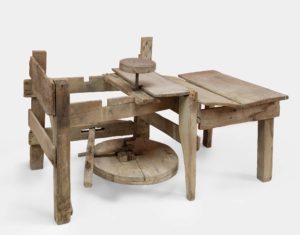
Hervey Brooks’s 19th-Century Pottery Barn
Hervey Brooks was an American potter and farmer who made red earthenware domestic products in Goshen for more than half a century.
Read
The Incident of the Stonington Schooner ‘Breakwater’: A View from Indian Country
Hundreds of American Indians served as mariners, including on the Stonington schooner ‘Breakwater,’ which survived capture in the Falkland Islands.
Read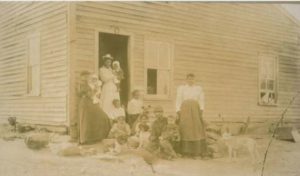
John Brown: A Portrait of Violent Abolitionism
John Brown of Torrington used violence to oppose the spread of slavery prior to the Civil War, ultimately leading a bloody raid on the armory in Harper’s Ferry, Virginia.
Read
The “Fancy Chair” Craze of the 1800s: Lambert Hitchcock and the Story of the Hitchcock Chair
More than something to sit on, “fancy chairs” were emblems of social mobility for middle-class Americans.
Read
Edwin Land Inventor of the Polaroid Born – Today in History: May 7
On May 7, 1909, Edwin Herbert Land, founder of the Polaroid Corporation, was born in Bridgeport, Connecticut.
Read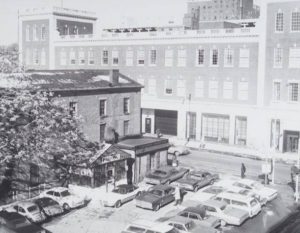
Louis’ Lunch and the Birth of the Hamburger
In 1900, in answer to a customer’s rush order for something “quick and delicious,” Louis Lassen of New Haven served up a meal that is credited as being the first hamburger.
Read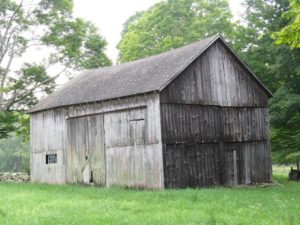
Barn Design in Connecticut
Most barns still on the Northeast landscape are New England-style barns from the 19th century and later.
Read
Canon Clinton Jones: A Revolutionary Figure in Connecticut’s LGBTQ+ History
Canon Clinton Jones was a central figure in Connecticut’s LGBTQ+ community and a pioneer for compassionate care, queer visibility, and gender affirmation.
Read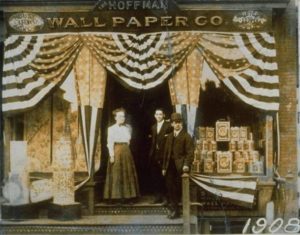
Tradition and Transformation Define Hartford’s Jewish Community
From the mid-1800s to the present, Jews have called Connecticut’s capital city home and enriched it with their cultural traditions and civic spirit.
Read
Yung Wing, the Chinese Educational Mission, and Transnational Connecticut
In their respective tragic but inspiring final American acts, Yung and the Mission reflect the worst and best of the Chinese Exclusion Act era.
Read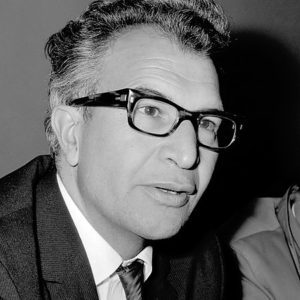
“Take Five” with Dave Brubeck
Dave Brubeck was one of the leading jazz pianists and composers of the 1950s and 60s and made his home in Wilton.
Read
Arbor Day’s Roots in Connecticut – Who Knew?
Connecticut’s Reverend Birdsey Grant Northrop popularized Arbor Day celebrations in schools across the country.
Read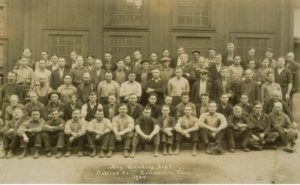
World-renowned Maker of Axes: The Collins Company of Canton
The New England factory town of Collinsville, which can still be toured today, once supplied the world with axes, machetes, and other edge tools.
Read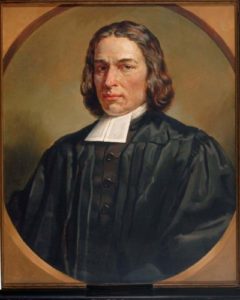
Jared Eliot Calls on Colonists to Change their Agricultural Practices
In 1760, this Killingworth minister and farmer published the first agricultural advice book in the British American colonies.
Read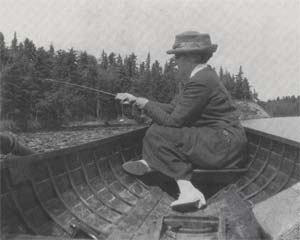
Edith Watson: Camera Artist
Over the five decades Edith Watson traveled around North America, her keen eye and box camera lens captured the otherwise untold stories of women.
Read
The Pike Family Lived a Life of Dyeing
The Pike family of Sterling, Connecticut worked in textile dying for four generations.
Read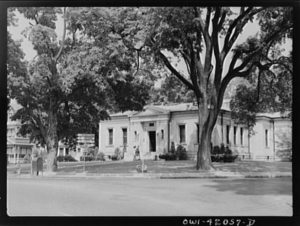
A History of Libraries Speaks Volumes About Southington
While it is not uncommon in the modern era for towns to appropriate funds for operating public libraries, the town of Southington has a unique history with its libraries.
Read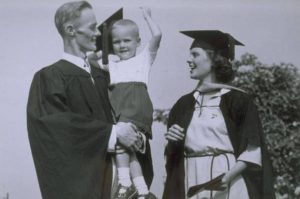
UConn and the Evolution of a Public University
From farming and war work to physics and sports, the University of Connecticut has diversified over the years and become New England’s leading public university.
Read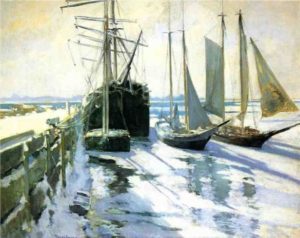
Connecticut and American Impressionism
American Impressionists looked to a New England countryside like that in Connecticut for evidence of a stable, timeless order beneath the dazzle of the ephemeral.
Read
Shakers Revolutionize Garden Seed Business – Who Knew?
Enfield Shaker-grown garden seeds, one of their best and most successful endeavors, were sold throughout the US in small packages.
Read
Vivien Kellems Takes On the IRS
Reformer Vivien Kellems fought her most famous battle against the Internal Revenue Service (IRS) as she sought tax reform for businesses and single people.
Read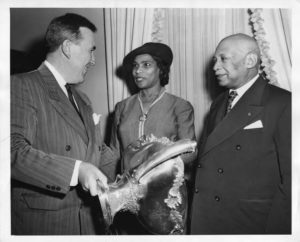
Marian Anderson’s Role in the Civil Rights Movement
Marian Anderson performed and traveled in segregated spaces and emerged as one of the great singers of the 20th century.
Read
Aldrich Free Public Library: Dedicated to the Dissemination of Knowledge
Residents of the Moosup section of Plainfield organized a free public library “for the promotion and dissemination of useful knowledge” to its local citizenry.
Read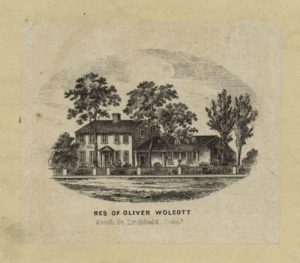
Soldier, Patriot, and Politician: The Life of Oliver Wolcott
Oliver Wolcott served in military in the Seven Years’ War and the American Revolution, but was also a popular member of the Continental Congress and governor of Connecticut.
Read
Road Signs of the Air
In the 1920s, most pilots navigated using road maps and by following highways, rivers, and other landmarks that they could see from the air.
Read
Humble Beginnings of the Dow Jones: How a Sterling Farmer Became the Toast of Wall Street
The life of Charles Dow, in many respects, follows the storyline of the prototypical self-made man.
Read
George Griffin: “Devoted Friend” to Samuel Clemens
Mark Twain wrote The Adventures of Huckleberry Finn and used his “good-natured” and “devoted” servant, George Griffin, as a likely model for one of literature’s most memorable figures—Jim, the runaway enslaved man.
Read
Abraham Ribicoff: Kennedy Confidant and Connecticut’s First Jewish Governor
Abraham Ribicoff rose from a New Britain tenement to become Connecticut’s first Jewish governor and a confidant of President John F. Kennedy.
Read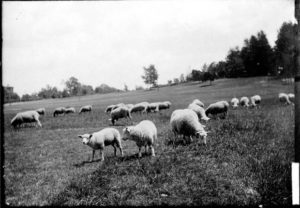
The Park Movement in Hartford
The Hartford City Parks Collection comprises a rich archive, documenting Hartford’s pioneering effort to establish and maintain a viable system of municipal parks and connecting parkways between them.
Read
Mad about Shad: Connecticut’s Love Affair with an Oily Fish
Some Connecticut River towns continue to hold an annual shad festival, replete with a “Shad Queen” and a feast known as a “shad planking.”
ReadMore Articles




